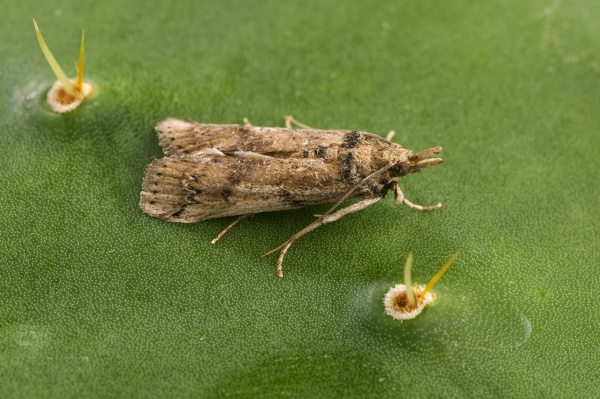Facts About Cactoblastis cactorum
The cactus moth, scientifically known as Cactoblastis cactorum, originates from South America, specifically Argentina, Paraguay, Uruguay, and southern Brazil. It is one of five species within its genus native to this region, where natural predators such as ants and New World monkeys help regulate its population. However, this moth has become an invasive species in regions such as Australia, the Caribbean, and South Africa, where it has been introduced beyond its native range.
In its natural habitat, the cactus moth engages in a parasitic relationship with Opuntia cacti. The adult moths are relatively nondescript, brownish-gray insects with long legs and antennae. It is the larvae, or caterpillars, that feed on the cactus. The moth’s reproductive cycle involves pre-dawn mating, with females laying their eggs on various parts of the cactus. The larvae then bore into the cactus pads, hollowing them out before pupating and eventually emerging as adult moths.
The proliferation of Cactoblastis cactorum has raised concerns in areas like the United States, where it threatens native Opuntia cacti populations and the ecosystems that rely on them. Efforts to control this invasive species include biological methods, such as utilizing bacteria or parasitic wasps, as well as physical interventions like quarantines and the mechanical removal of infested cacti. Nonetheless, uncertainties remain regarding the moth's full range of host plants, its impact on agriculture, and the efficacy of these control methods.
Interestingly, some regions are exploring the use of ants as a potential control strategy. Ants have mutualistic relationships with certain cacti and can help protect them from the moth. Ongoing research and conservation efforts aim to better understand and manage the spread of Cactoblastis cactorum. In Australia, monuments even commemorate the moth’s role in eradicating invasive Opuntia cacti in certain areas.

 India
India